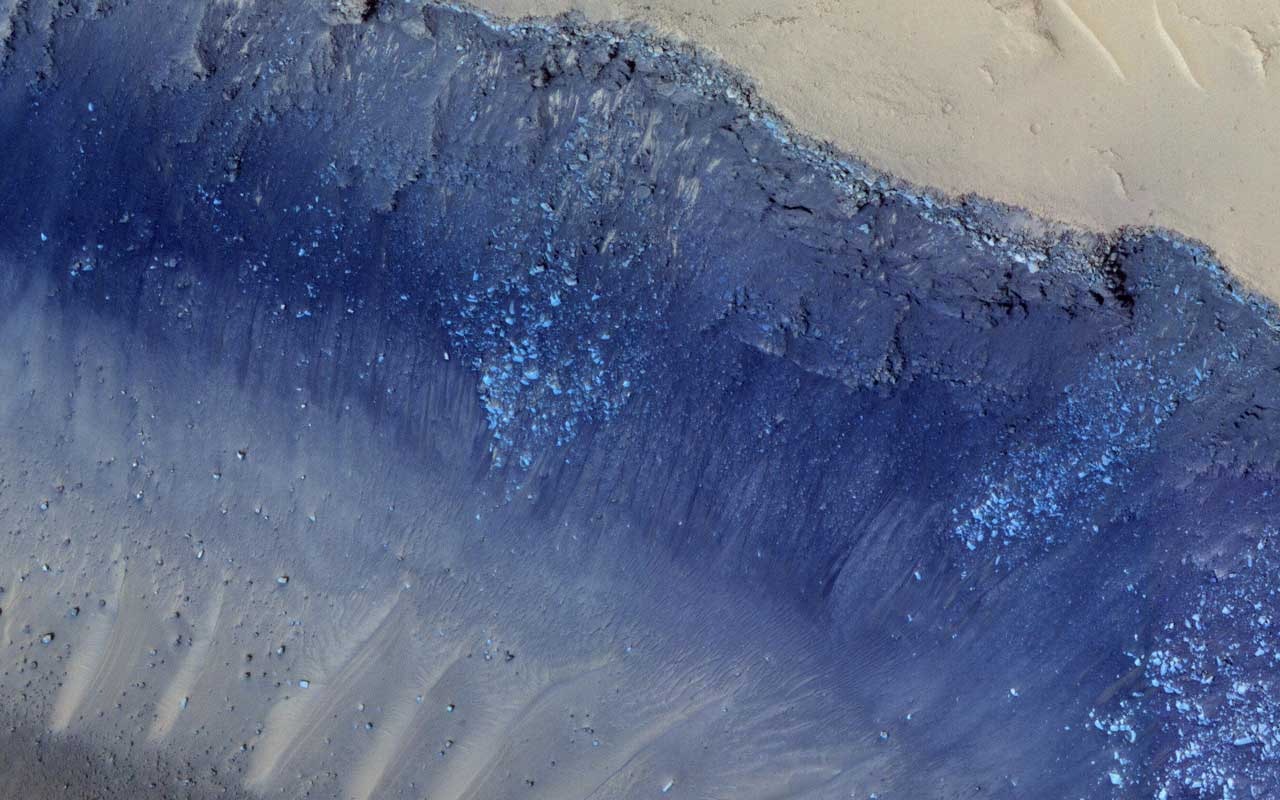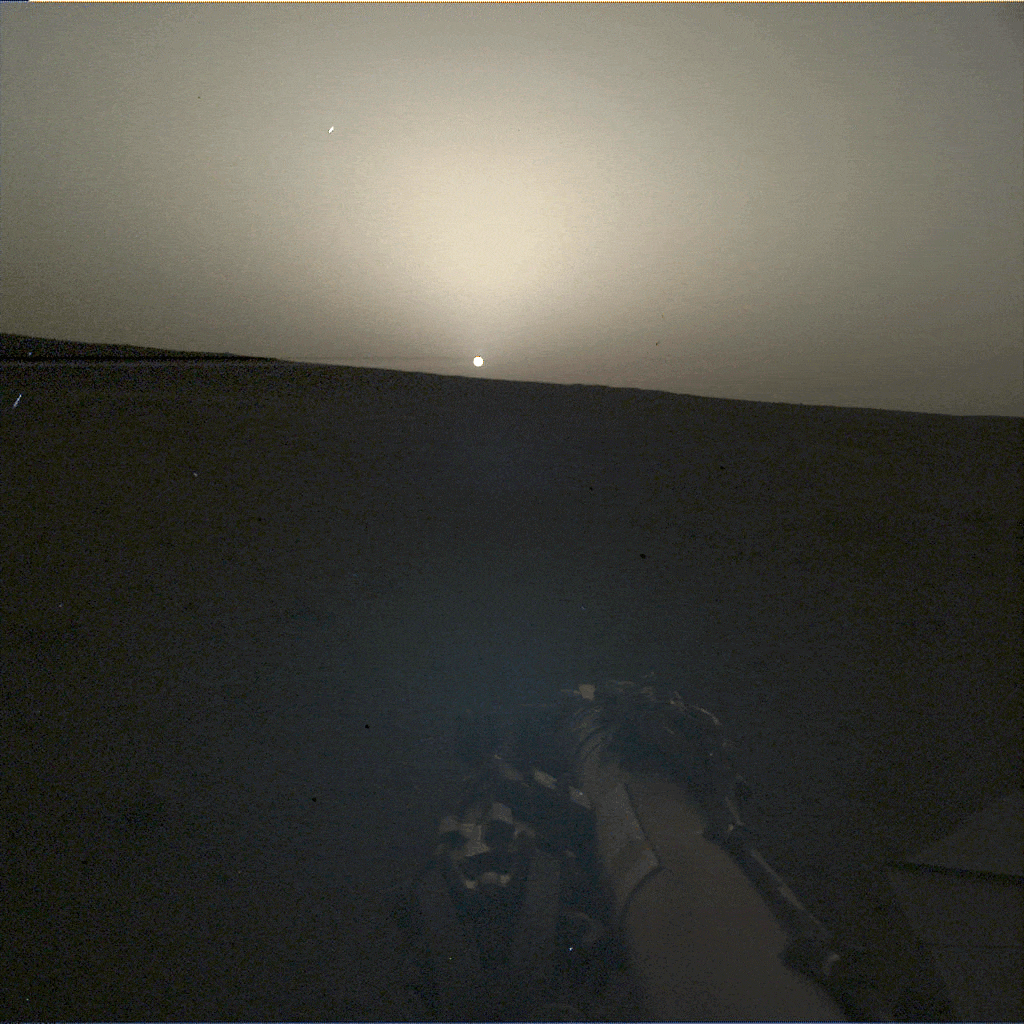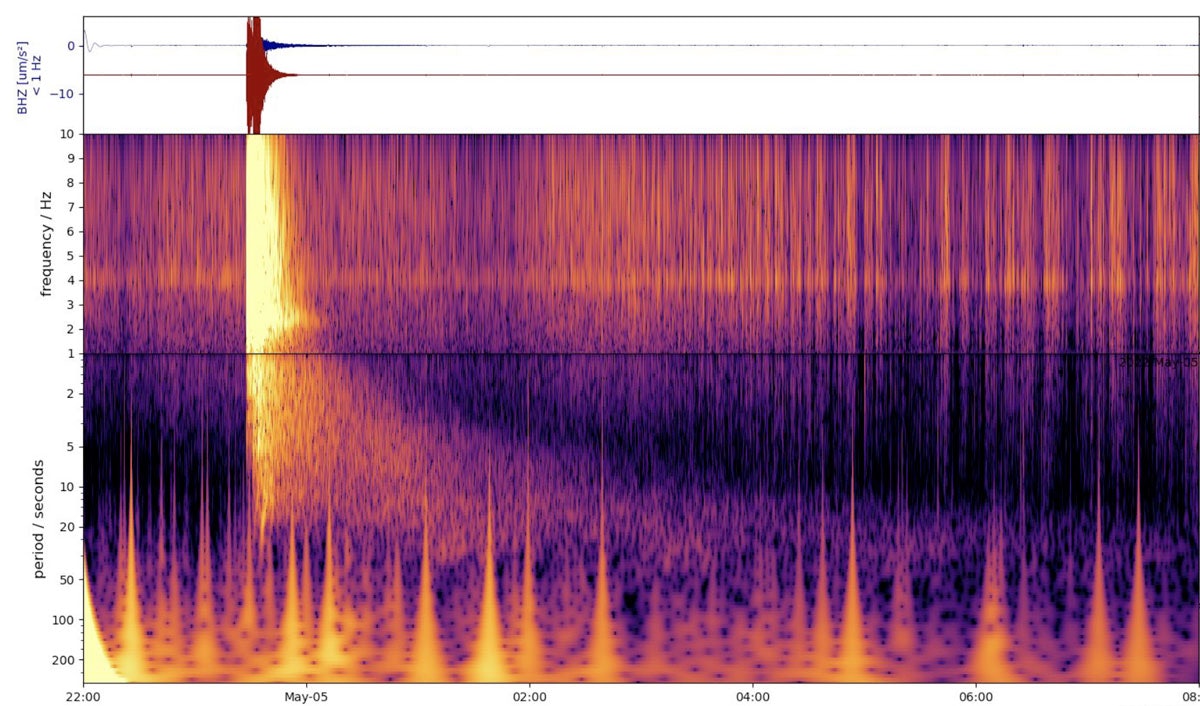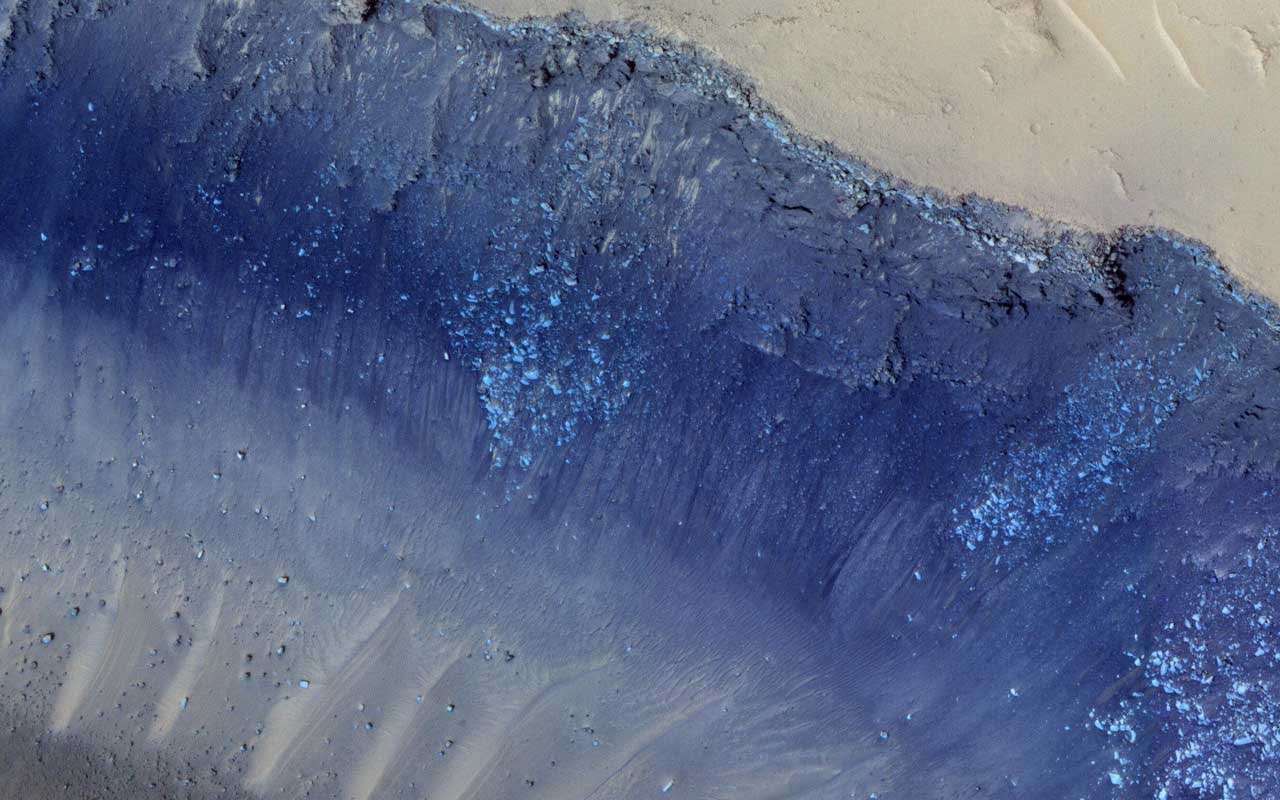
On Tuesday, researchers announced a surprising origin of the strongest quake ever recorded on Mars.
While exciting, the quake’s discovery was bittersweet. The tremor, strong enough to shatter building windows on Earth, shook the Martian surface just weeks before NASA declared the end of the mission that discovered it.
InSight, short for Interior Exploration using Seismic Investigations, Geodesy, and Heat Transport, reached Mars in November 2018 to listen keenly for vibrations from Mars’ crust and interior. On May 17, 2022, NASA announced the mission would have to end. Dust had gradually accumulated onto the immobile lander’s solar panels, blocking the sunlight that supplied its energy. Scientists were forced to run InSight intermittently to preserve power. As they were operating in this alternating rhythm, shortly before NASA’s somber declaration, InSight sensed the grand quake on May 4, 2022. It fortuitously occurred when InSight was online.
Benjamin Fernando, a former postdoctoral researcher at the University of Oxford who studies impacts on Mars and their subsequent shaking of the surface, led a team to figure out what triggered the quake. On Tuesday, their results were published in a paper in the journal Geophysical Research Letters.

What causes quakes on Mars?
During its four-year lifespan, InSight detected about 1,300 quakes. Some of them were triggered by Mars itself, as the planet heats and cools throughout the day, expanding, contracting, and causing stresses to build up in faults and manifesting as small shocks. “It’s a bit like how if you’ve got a kettle boiling or a radiator, you hear it making a noise,” Fernando says.
Other quakes came from meteor strikes that pound and shake the ground.
Researchers suspected the May 4, 2022, quake was connected to an impact and began to search through data from eight missions orbiting Mars. They were looking for evidence to prove a strike, like a dust cloud or a fresh crater.
Why do Mars quakes matter?
They were surprised that a quake of this magnitude could happen on Mars. The event was significantly bigger than the next strongest quake.
“The magnitude was about 4.7, and that’s pretty substantial in the sense that this is the biggest we’ve seen on Mars so far,” Fernando says.

“It’s not very big compared to the big earthquakes on Earth. But if you’d been sitting nearby or something, it would have probably shaken your house, might have smashed a few windows, that kind of thing. So not bringing down buildings, but still substantial enough that you would have noticed it if it happened near you,” Fernando adds.
But while not colossal, larger quakes are still quite rare. They help to tell Mars’ seismological story. These rare, dramatic occurrences help paint a picture alongside the planet’s much softer, more common tremors.
A model for Martian quakes could help scientists who study Earth. Although Mars is quite different from Earth, since Mars has what is effectively a single tectonic plate across the planet’s entire surface, Fernando says it offers a useful comparison. “It can be difficult to come to robust conclusions about that sort of thing when you’ve only got one planet to look at,” he says.
Something’s missing
Their search for a meteor impact came up empty.

The event most closely matched strong quakes from cosmic strikes, especially its slow surface waves (the sorts that can bring down buildings during earthquakes). But the team didn’t find evidence for a meteor, despite having eight orbiters’ worth of surface data.
The lack of evidence made them conclude the quake was internally driven. The idea that the quake has a tectonic origin is a surprise, although other causes, like landslides, haven't been ruled out.
“The honest truth is, with only one seismometer, it’s really hard to be 100 percent certain about anything on Mars,” Fernando says.
InSight ended its mission officially in December 2022, though scientists continue to analyze its treasure trove of data. InSight’s work is also informing how future missions, like NASA’s Dragonfly, can study other worlds in the Solar System.







